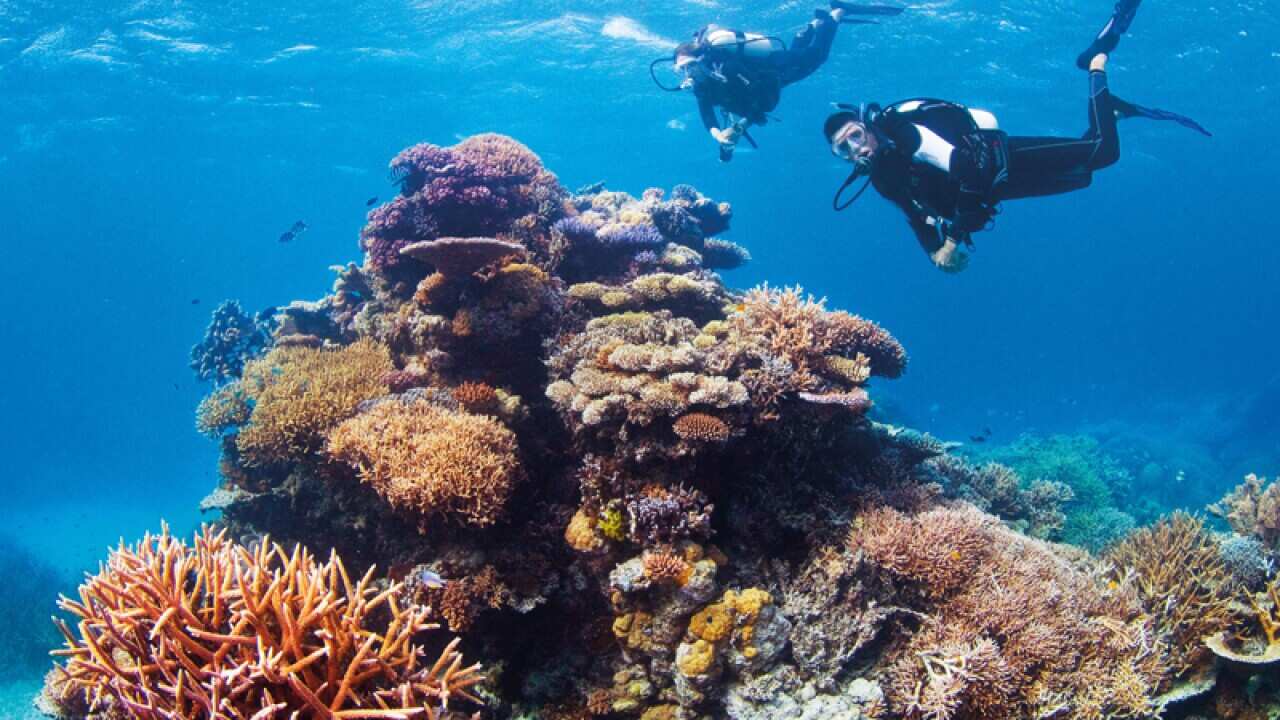World leaders will meet for the COP21 talks in Paris next week to negotiate limits to carbon emissions and global temperature rises above pre-industrial levels.
Climate change is recognised as one of the greatest threats to the future of the 2,000 kilometre-long, World Heritage-listed wonder off the Queensland coast, and also the billion dollar industries, like tourism, it supports.
A mass coral bleaching of the reef is predicted for early next year due to the El Nino weather pattern and higher water temperatures.
“The best outcome (from COP21) for the reef would be that we have a global agreement to limit global warming to two degrees Celsius below the pre-industrial period,” said Ove Hoegh-Guldberg, director of the Global Change Institute at the University of Queensland.
A Great Barrier Reef in the future?
“If we can do that then we have a good chance of having a Great Barrier Reef into the future.
“If we take the current commitments as our benchmark, which gets us to about 2.7 degrees above the pre-industrial period, we will lose places like the Great Barrier Reef, and if we don’t do anything about the climate change issue we will see the reef disappear in our lifetime.
“To stay below two degrees Celsius, below the pre-industrial levels and avoid unmanageable climate change, it’s going to take leaving 80 per cent of fossil fuel in ground. That's challenging, one can jump up and down and object, but it is the science.”
Prime Minister Malcolm Turnbull will lead a delegation of Australian government ministers to the COP21 talks.
“Australia wants the Paris Conference to deliver an ambitious and durable agreement that builds action by all countries towards the global goal to limit temperature rise to below 2 degrees Celsius above pre-industrial levels,” states the Department of Foreign Affairs on its COP21 webpage.
The reef is the only living organism that can be seen from outer space. Almost 20 million-years-old, the reef is one Australia's greatest tourist attractions and they come from around the world in their millions, to see it up close.
Almost 20 million-years-old, the reef is one Australia's greatest tourist attractions and they come from around the world in their millions, to see it up close.

An aerial view of the Great Barrier Reef Source: AAP
“It's endangered somehow, every year a little piece is gone, so we wanted to see this (before it’s gone),” said tourists Luca and Kasia, who are visiting from Poland.
“The wildlife is really amazing, the fish are just in front of you, and there’s nowhere in the world you can do this.”
Reef tourism booming
About two million people visit the reef every year, and overseas visitor number are growing fast with the falling Australian dollar.
“Tourism industry in Whitsundays is booming,” said Tony Fontes, a scuba dive operator in Airlie Beach.
“Last year we set a record regards to the number of people visiting the reef and this year we're set to smash that.”
Reef industries are a vital part of the federal government's Northern Australia economic development released in September.
“Without a Great Barrier Reef we won't have a tourism industry and right now we have an tourism industry that's worth $6 billion a year to Queensland and provides 69,000 jobs,” said Mr Fontes.
The reef supports a tenth of the world's fish species, six of the seven turtles, endangered dugongs, whales and more than 600 types of coral.
The first mass coral bleaching was recorded in 1998 when water temperatures rose and broke the symbiotic relationship between coral and algae. About 16 per cent of global reefs died.
“What you see is the reef develop into a slimy pile of rocks,” said Professor Hoegh-Guldberg.
“All the corals have died, all the habitat for the fish have disappeared, and you have an eco-system that would be hard to say is a Great Barrier Reef, the great slimy reef, and that won’t attract tourists and won’t support fisheries.”











